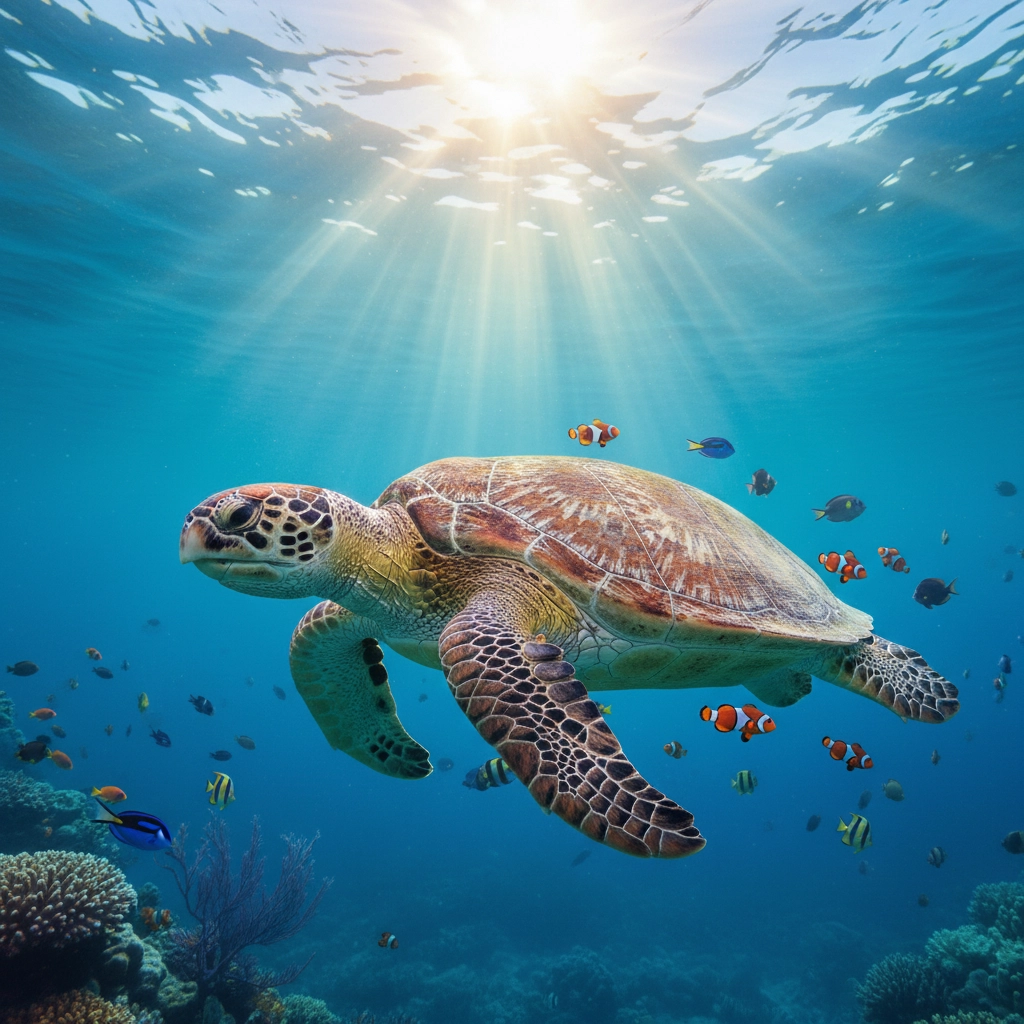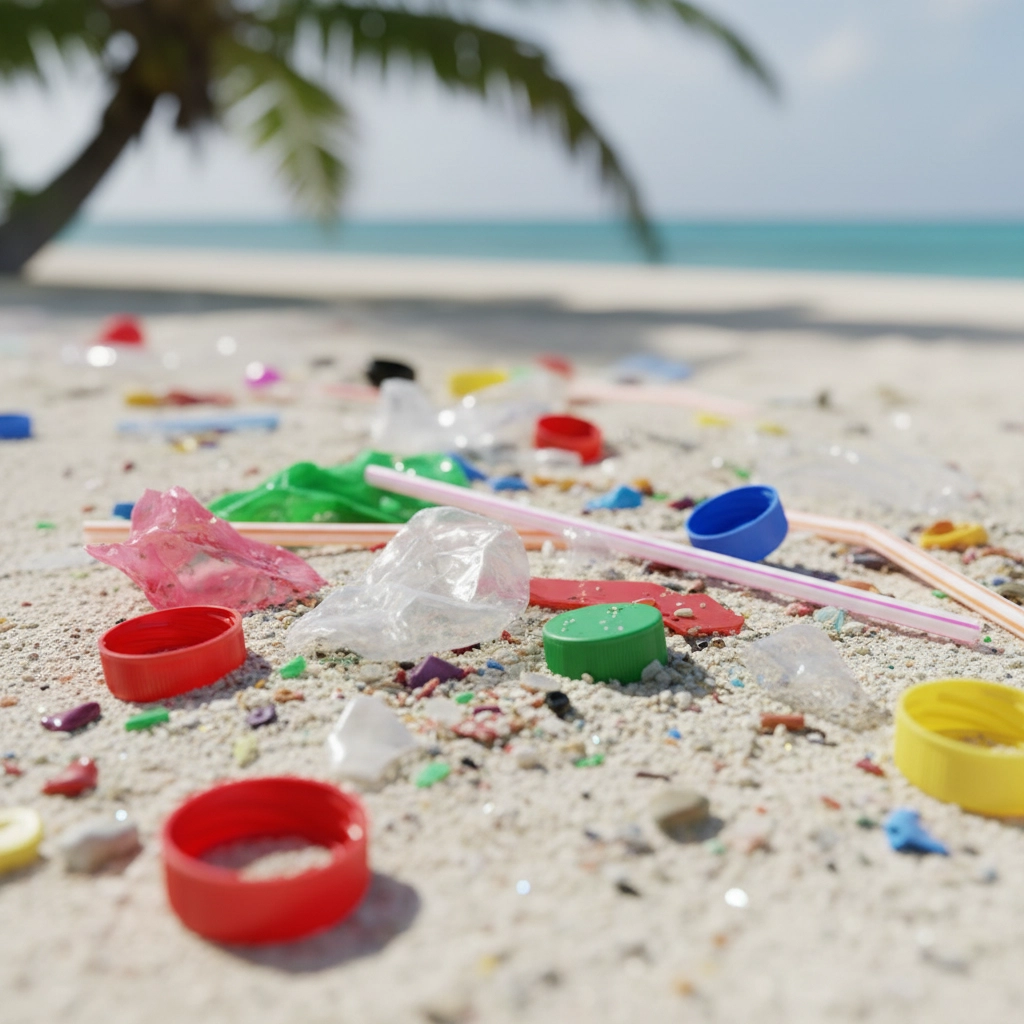Sea Turtle Conservation Secrets Revealed: What Marine Biology Students Don't Want You to Know About the Emerald Coast
- Caleb Mullenix
- 19 hours ago
- 5 min read
The "secrets" marine biology students discover along Florida's Emerald Coast aren't hidden conspiracies: they're eye-opening scientific realities that transform how young researchers understand marine conservation. These revelations emerge through hands-on fieldwork, direct observation, and collaboration with conservation scientists working to protect one of America's most critical sea turtle nesting regions.
The Hidden Complexity of Sea Turtle Navigation
Students participating in Emerald Coast expeditions quickly learn that sea turtle navigation involves far more sophisticated science than textbooks suggest. Female sea turtles demonstrate remarkable precision when returning to their natal beaches after decades in the ocean, relying on a combination of magnetic field detection, chemical signatures, and astronomical positioning.
Research conducted along the Emerald Coast reveals that hatchlings "imprint" on their home beach during their first journey to the sea, absorbing critical environmental data including magnetic signatures, water chemistry, and celestial positioning. This imprinting process allows them to return with extraordinary accuracy 20 to 30 years later to establish their own nesting sites.
Students observe this phenomenon firsthand when monitoring tagged females. Many returning turtles nest within mere yards of their birthplace, despite traveling thousands of miles throughout their adult lives. This precision demonstrates biological navigation capabilities that exceed human understanding and underscores the critical importance of protecting specific nesting beaches.

The Light Pollution Crisis: A Modern Threat to Ancient Behavior
One of the most shocking discoveries for students involves understanding how human development has disrupted millions of years of evolutionary adaptation. Sea turtle hatchlings evolved to navigate toward the brightest horizon: historically, moonlight and starlight reflecting off ocean waves. However, coastal development has created artificial light sources that confuse and misdirect hatchlings.
Field research along the Emerald Coast demonstrates the severity of this problem. Students document how artificial lighting from beachfront properties, streetlights, and commercial developments causes hatchling disorientation, leading them away from the ocean toward dangerous inland areas. This phenomenon, called "disorientation," results in exhaustion, predation, and death for thousands of hatchlings annually.
Conservation efforts have implemented turtle-friendly lighting ordinances requiring amber or red LED lighting systems that minimize disruption to sea turtle behavior. Students participate in light audits, measuring artificial illumination levels and documenting compliance with protective regulations. These activities reveal how seemingly minor human decisions: choosing appropriate light fixtures: can dramatically impact wildlife survival.
Species Diversity and Ecological Roles
The Emerald Coast hosts four distinct sea turtle species: Loggerhead, Green, Leatherback, and Kemp's Ridley turtles. Each species demonstrates unique ecological roles and conservation challenges that students explore through comparative field studies.
Loggerhead turtles, the most common nesting species, serve as keystone species in marine ecosystems. Their powerful jaws crush shellfish, maintaining healthy populations of crabs, mollusks, and sea urchins. Students observe feeding behaviors and document prey species, learning how top predators regulate entire food webs.
Green turtles function as marine gardeners, grazing seagrass beds and maintaining healthy underwater meadows that support diverse fish communities. Field studies demonstrate how turtle grazing patterns influence seagrass density, species composition, and overall ecosystem productivity.
Leatherback turtles, the largest sea turtle species, specialize in consuming jellyfish, including venomous species like Portuguese man-of-war. Students study stomach content data and tracking information to understand how leatherbacks control jellyfish populations that could otherwise devastate fish communities.

The Plastic Pollution Reality
Marine debris research reveals disturbing realities about plastic pollution's impact on sea turtle populations. Students conducting beach cleanup surveys consistently document how sea turtles mistake plastic debris for food, leading to intestinal blockages, malnutrition, and death.
Field necropsy data shows that plastic ingestion affects all sea turtle species, with particularly severe impacts on young turtles. Students examine preserved specimens and study x-ray images showing plastic fragments, fishing line, and balloon remnants in turtle digestive systems. These visceral experiences motivate students to become passionate advocates for reducing single-use plastics.
Research demonstrates that even small plastic particles can accumulate in turtle tissues, potentially affecting hormone levels, immune function, and reproductive success. Students participate in microplastic sampling, using specialized equipment to collect and analyze plastic particles from water samples and turtle nesting areas.
Vessel Strike Documentation and Prevention
Students discover that boat propeller strikes represent a significant threat to adult sea turtles throughout the Emerald Coast region. Conservation research documents high rates of boat-related injuries, particularly among green turtles that feed in shallow seagrass beds near popular boating areas.
Field studies involve photographing and documenting injured turtles to understand strike patterns, boat traffic impacts, and seasonal injury rates. Students learn to identify propeller scars, distinguish boat strikes from other injuries, and collect data supporting protective speed zones and restricted access areas.
This research reveals how recreational boating patterns directly correlate with turtle injury rates. Students analyze boat traffic data, turtle movement patterns, and injury reports to identify high-risk areas requiring enhanced protection measures.

Climate Change and Nesting Success
Temperature-dependent sex determination represents one of the most concerning climate change impacts on sea turtle populations. Students learn that sand temperatures during incubation determine hatchling gender, with warmer temperatures producing more females and cooler temperatures producing more males.
Field research involves monitoring nest temperatures using data loggers, documenting how beach development, vegetation removal, and rising air temperatures affect sand temperatures. Students discover that some beaches now produce nearly 100% female hatchlings, creating potential reproductive bottlenecks for future generations.
Conservation strategies include beach shading projects, vegetation restoration, and nest relocation programs that students actively support. These hands-on activities demonstrate how scientific research translates into practical conservation solutions.
The Recovery Success Story
Despite numerous threats, Emerald Coast sea turtle populations demonstrate remarkable recovery potential when proper conservation measures are implemented. Students learn that consistent protection efforts, including nest monitoring, lighting ordinances, and public education programs, have resulted in increasing nesting numbers for several species.
Long-term data sets reveal how sustained conservation investments produce measurable population improvements. Students analyze decades of nesting data, tracking population trends and identifying successful conservation strategies that can be replicated in other regions.
This success story demonstrates the critical importance of science-based conservation approaches and community engagement in protecting marine wildlife.
Student Impact and Future Conservation Leaders
Marine biology students participating in Emerald Coast expeditions become passionate conservation advocates equipped with scientific knowledge and field experience. They return to their communities with practical understanding of how individual actions affect marine ecosystems and wildlife populations.
Many students pursue advanced degrees in marine biology, conservation science, or environmental policy, carrying their Emerald Coast experiences into professional careers. Others become community educators, sharing their knowledge with local schools, environmental organizations, and policymakers.
The Emerald Coast experience transforms students into informed citizens who understand the complex relationships between human activities and marine ecosystem health. They develop critical thinking skills, scientific methodology expertise, and environmental stewardship values that influence their lifelong career choices and community involvement.
Experience these transformative learning opportunities firsthand through Appleseed Expeditions' marine science programs. Students and educators gain invaluable field experience while contributing to active conservation research that protects sea turtle populations for future generations.



Comments